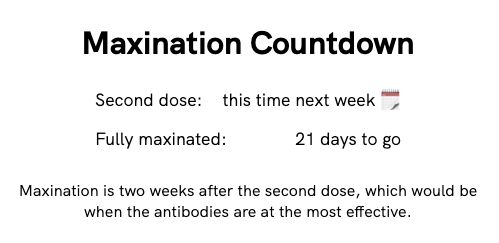-
Abandoning Project Lorikeet
I’ll admit it: the mini-project that I have been working on may not have been a good idea. The project, which I gave the codename Lorikeet, was to provide a way to stream YouTube videos to a Chromecast without using the YouTube app. Using the YouTube app is becoming a real pain. Ads aside, they’ve completely replaced the Chromecast experience from a very basic viewing destination to something akin to a Google TV, complete with recommendations of “Breaking News” from news services that I have no interest in seeing. Continue reading →
-
I try to minimise the number of regrets I will eventually have in my life, but sometimes they do happen. One regret I do have is only taking up blogging/journaling relatively recently. I feel it would have been better if I started much earlier.
-
I don’t understand people who would ruin their own website with popups thrown in my face the minute I start reading which are impossible to dismiss. If this is the way you treat me when I read your content, what makes you think I’d be interested in doing business with you?
-
Two People
There are two people, and each one has the same problem that they want to get solved. The first person chooses the option to pay $10 a month, and all they have to do is sign up to a service that will solve the problem for them. The service they sign up for takes care of the rest. The second person chooses the option to pay $15 a month, 20 hours of work to get something built, and an ongoing commitment to keep it maintained. Continue reading →
-
I’ve never been someone that has their TV on all the time; but after working at home, by myself, on and off for the last 19 months, I can see why people do. Just having some background noise that you can sort of half listen to can help keep the mind somewhat calm.
-
My Stratechery mug has arrived.

It now holds the enviable position of largest mug in my house, holding roughly 1.5x as much liquid as the mugs I usually use.

-
The danger of playing around with blogging platforms is that you find yourself wondering which platform you should continue using. Do you split your writing across multiple platforms? If so, how? Such is the current feeling I have with Micro.blog and Drummer.
-
I heard that Dave Winer has released Drummer so I decided to give it a try. Although I’m not fully sold on using an outliner to blog, I do appreciate the way it allows for passive blogging: just that natural approach to writing what you’re thinking about. I am interested in trying out some of scripting aspects of it. I found Winer’s approach to building the scripting capabilities directly into the web-app to be fascinating.
-
Just arrived home from receiving my second dose of AstraZenica. Feeling pretty good about it. Not long now until full maxination. 💉💉
-
I’ve got a Shortcut on my iPad to save links to Pinboard. I want to get the page title when I save the bookmark, so I’ve added a Safari step which reads the title from the webpage itself. And by adding this step, every time I run the Shortcut, I get asked to grant permission to Safari to read the webpage in order to get the title. Every. Single. Time.
Apple: some advice. I’ve wrote this Shortcut myself. I’ve explicitly added a step to get something from the website myself. Therefore, I am explicitly granting Safari permission to access the website. If I didn’t want Safari to read the website content, I wouldn’t have put that step in the Shortcut at all.
Please, stop asking me for permission to do something I’ve asked you to do, and just do it!
-
Just finished a lovely game of Wingspan with the Oceania Expansion set. It was nice playing the game with birds that I recognise.
-
This is another post lamenting the fact that too many development blogs from companies like Netflix and Shopify use a CMS that don’t publish an RSS feed. It’s either Medium, or something geared towards email newsletters. Why? It’s not like they depend on reader subscriptions. 🤷
-
A lot is said about AWS offering so many services in exchange for some of them being half-baked. I just wish they baked a few of the ones I’m using a little longer.
I’m dealing with a Step Function which includes a task that updates a record in DynamoDB. With Step Functions, the output of one task becomes the input of another, sort of how pipes work in Unix. But this DynamoDB update task produces an output that is really unhelpful: a lot of internal reference IDs and headers that are useless to me, and nothing of the record I’m trying to update.
I guess this means I’ll be adding workarounds in order to make this Step Function work.
-
I know how frustrating it is to work with JSON for configuring things, but sometimes YAML can be just as bad. Surely there are better configuration languages we could be using than these two.
-
That feeling when you have to do something that you’ve not only done before, but you’ve actually written a blog post about; and you use that post to accomplish the task in a 10th of the time in took you the first time around. 😌
See also: Stack Overflow answers.
-
(Hyper)critical Acclaim
There were a couple of events that led me to writing this post. I’m sure part of it was seeing the posts on the 10 year anniversary of Steve Jobs, although such an event would probably not have been sufficient in itself. What tipped it over the edge was seeing the Ars Technica review of iOS showing up in my RSS feed on the same day. Pretty soon I’m expecting the MacOS review to drop as well. Continue reading →
-
The eternal struggle of an Android phone owner (based on a true story):
Website: Hey, check out this cool new app.
Me: Looks interesting. Where’s the link to it in Google Play?
Website: Sorry, iOS only.
Me: 😿
-
So Facebook has an outage and now every software engineer in the world knows a bit more about how the internet is put together as they read up on how BGP and DNS actually work.
CloudFlare has a pretty good post about the outage. There’s also this video which talks about BGP.
-
One week to go! 💉💉

-
For the last couple of weeks, I’ve been driving Confluence at work, doing investigations and writing them up. It’s nice getting these tasks occasionally but too much of it does become tedious. So when I saw a coding task in the backlog, I jumped on it.
-
This week’s earworm: Who Can It Be Now by Men At Work 🎵
-
On Choosing the Hard Way Forward
This is about work, so the usual disclaimers about opinions being my own, etc. apply here. I have an interesting problem in front of me at the moment: I’ve need to come up with a way to be notified when a user connects to, or disconnects from, a PostgreSQL database. This is not something that’s supported by PostgreSQL out of the box1, so my options are limited to building something that sits outside the database. Continue reading →
-
Apparently my phone carrier is pretty good at promptly sending SMS messages with “offers” or “deals”, but as soon as I need to sign into a website with 2FA, they’re quite happy for the message to take 5 or 10 minutes to get to me. 😒
-
There’s no better aroma than a freshly opened bag of coffee beans.
-
Small request to developers of command line tools: please do not assume everyone is using a terminal with a dark background. Light grey text on white is not a good user experience.